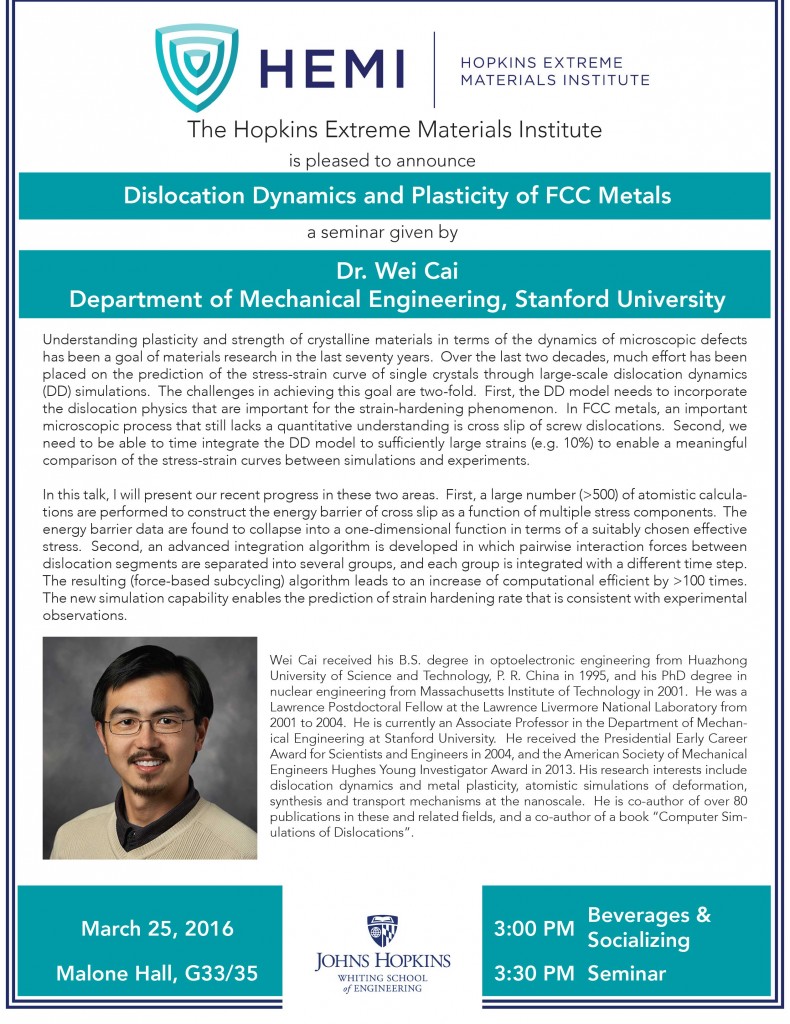March 25, 2016 @ 3:30 pm - 4:30 pm
Event Navigation
Dislocation Dynamics and Plasticity of FCC Metals
Understanding plasticity and strength of crystalline materials in terms of the dynamics of microscopic defects has been a goal of materials research in the last seventy years. Over the last two decades, much effort has been placed on the prediction of the stress-strain curve of single crystals through large-scale dislocation dynamics (DD) simulations. The challenges in achieving this goal are two-fold. First, the DD model needs to incorporate the dislocation physics that are important for the strain-hardening phenomenon. In FCC metals, an important microscopic process that still lacks a quantitative understanding is cross slip of screw dislocations. Second, we need to be able to time integrate the DD model to sufficiently large strains (e.g. 10%) to enable a meaningful comparison of the stress-strain curves between simulations and experiments.
In this talk, I will present our recent progress in these two areas. First, a large number (>500) of atomistic calculations are performed to construct the energy barrier of cross slip as a function of multiple stress components. The energy barrier data are found to collapse into a one-dimensional function in terms of a suitably chosen effective stress. Second, an advanced integration algorithm is developed in which pairwise interaction forces between dislocation segments are separated into several groups, and each group is integrated with a different time step. The resulting (force-based subcycling) algorithm leads to an increase of computational efficient by >100 times. The new simulation capability enables the prediction of strain hardening rate that is consistent with experimental observations.
Seminar will be held in Malone Hall, Room G33/35.





